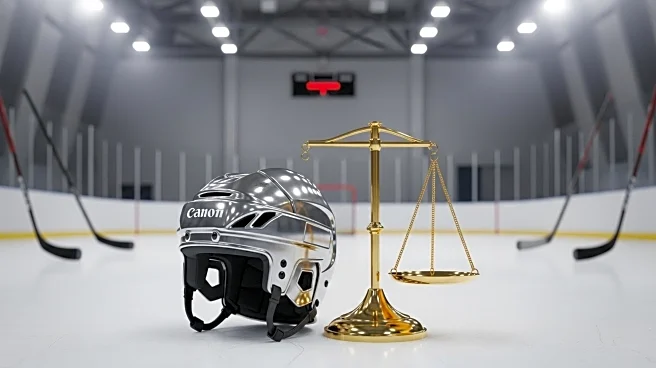What is the story about?
What's Happening?
The NHL has implemented several rule changes for the 2025-26 season, focusing on salary cap management and player conduct. A key change involves limiting the cap space gained from placing players on long-term injured reserve (LTIR) to prevent teams from circumventing the salary cap. The league has also introduced a postseason salary cap to ensure fair competition. Other changes include relaxing the dress code for players and refining in-game rules, such as high-sticking and offside calls. These adjustments aim to enhance the integrity and fairness of the game.
Why It's Important?
The rule changes reflect the NHL's efforts to maintain competitive balance and financial fairness among teams. By addressing potential loopholes in salary cap management, the league aims to prevent teams from gaining an unfair advantage. The changes could impact team strategies, player transactions, and overall league dynamics. Ensuring a level playing field is crucial for maintaining fan interest and the league's reputation. The adjustments also highlight the NHL's responsiveness to evolving challenges and its commitment to upholding the sport's integrity.
What's Next?
Teams will need to adapt to the new rules, potentially altering their roster management and financial strategies. The league will monitor the impact of these changes and may consider further adjustments based on feedback and outcomes. The NHL's approach to rule enforcement and compliance will be critical in ensuring the effectiveness of the new regulations. Stakeholders, including teams, players, and fans, will be watching closely to see how the changes influence the upcoming season and the league's competitive landscape.
Beyond the Headlines
The rule changes underscore the importance of transparency and accountability in professional sports. The NHL's proactive measures to address salary cap concerns reflect broader trends in sports governance, where leagues are increasingly focused on ensuring fair play and financial integrity. The situation highlights the challenges of balancing commercial interests with the need to maintain competitive equity, a key consideration for sports organizations worldwide.
AI Generated Content
Do you find this article useful?














